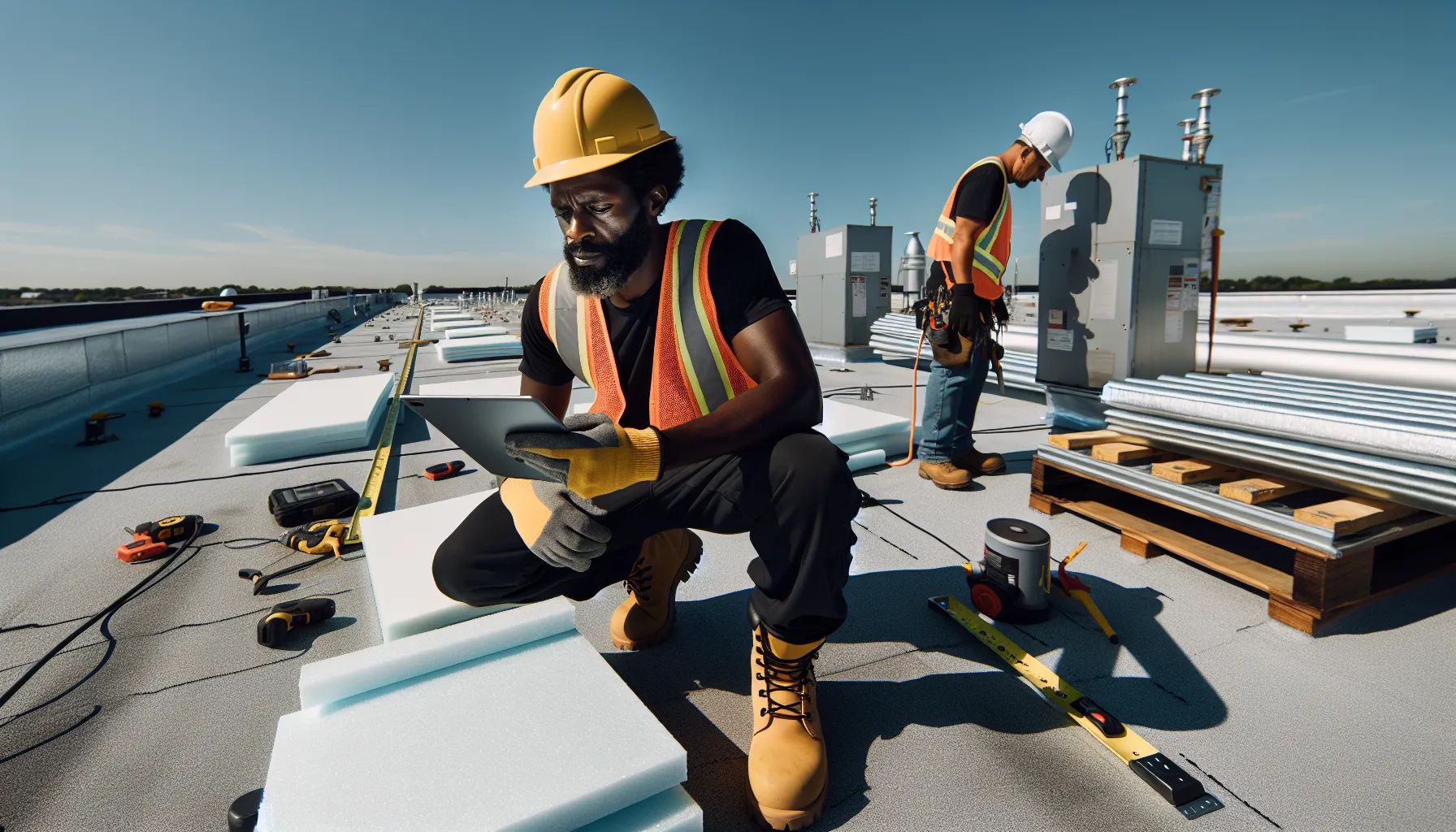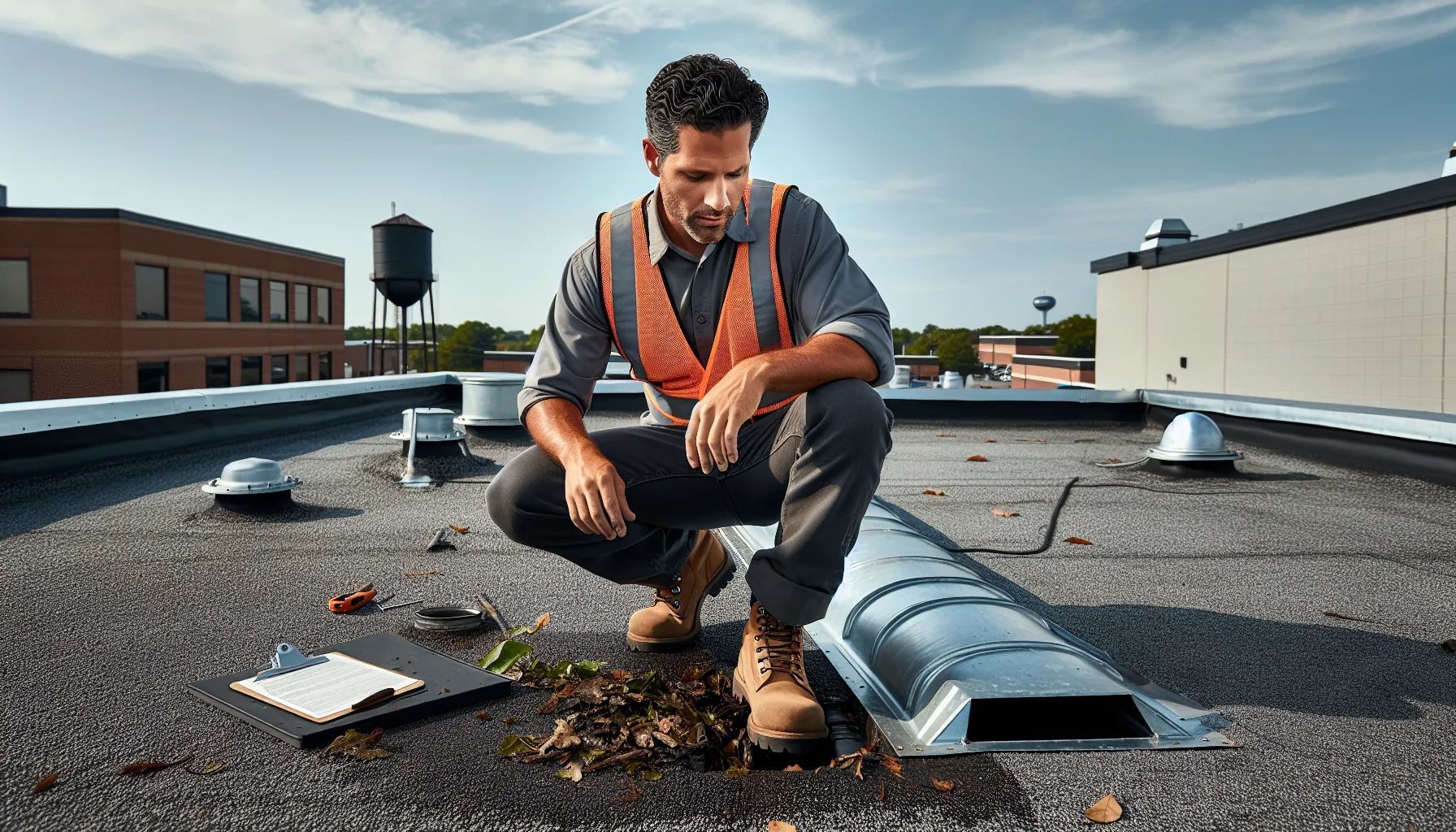Types of Clay Tile Roofs: Spanish, French, Mission & Roman Styles Compared
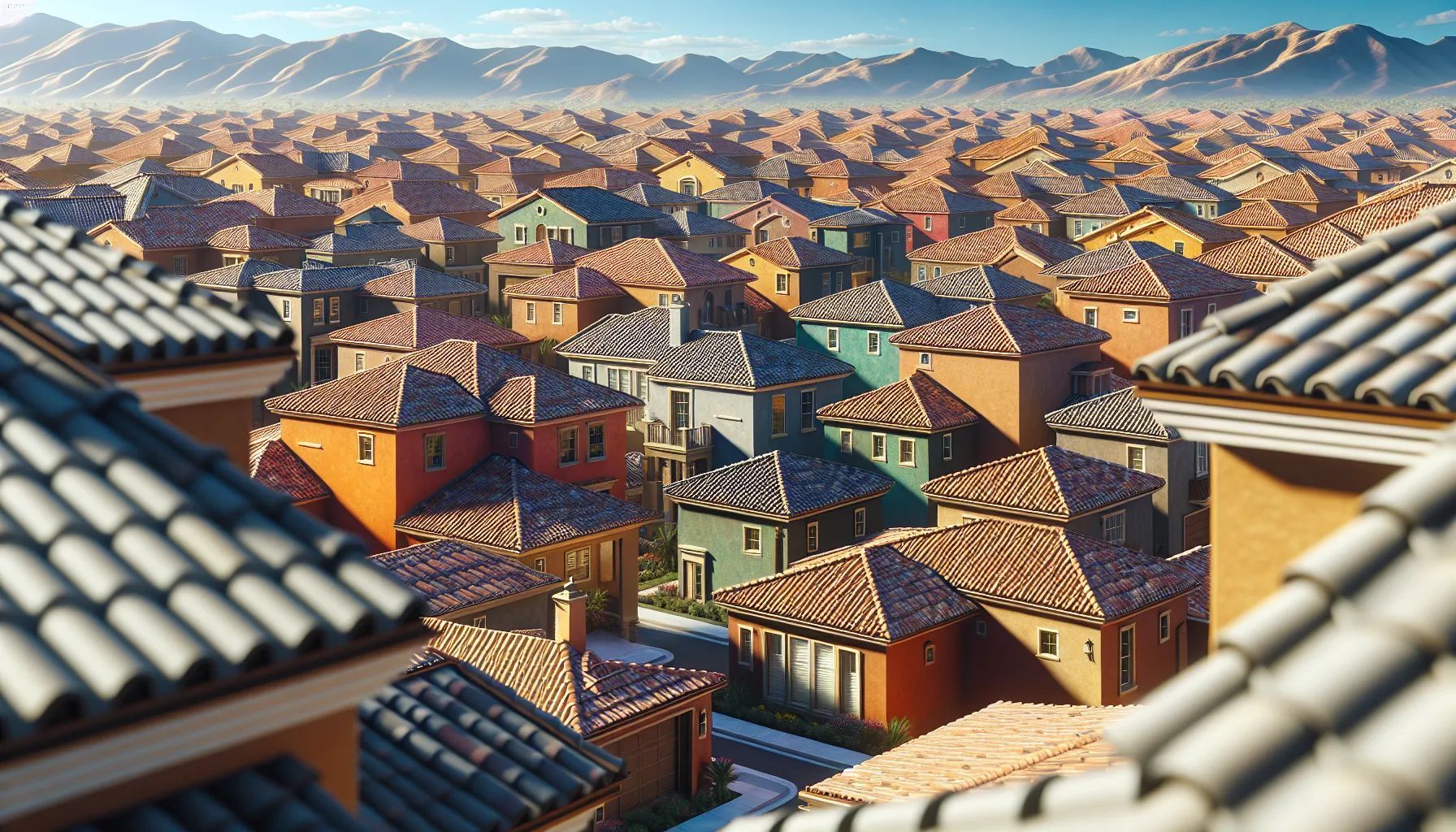
Clay tile roofs have crowned homes for thousands of years and they're still one of the most sought-after roofing materials today. We've seen these distinctive tiles transform ordinary houses into architectural masterpieces while providing unmatched durability and energy efficiency.
But here's what most homeowners don't realize: not all clay tiles are created equal. The variety of styles shapes and installation methods can make or break your roofing project. We'll explore the intriguing realm of clay tile options that can elevate your home's curb appeal and protect it for generations.
From traditional barrel tiles to sleek flat profiles each type offers unique benefits and aesthetic possibilities. Understanding these differences is crucial for making the right choice for your climate budget and architectural style.
What Are Clay Tile Roofs?
Clay tile roofs consist of hardened clay units that protect buildings from weather elements. These roofing materials undergo a firing process at temperatures exceeding 2,000°F (1,093°C), creating durable tiles that last 50-100 years.
Clay tiles contain natural earthen materials shaped into specific profiles before kiln firing. The manufacturing process transforms raw clay into water-resistant roofing components through controlled heating and cooling cycles.
Components of Clay Roofing Systems
Each clay tile roof incorporates five essential components:
- Clay tiles: Individual units measuring 12-18 inches (30-45 cm) in length
- Underlayment: Waterproof membrane beneath tiles
- Battens: Horizontal wooden strips supporting tile placement
- Fasteners: Nails or clips securing tiles to battens
- Flashing: Metal pieces sealing roof penetrations
The weight of clay tiles ranges from 600-1,500 pounds per square (100 square feet). This substantial mass requires reinforced roof structures capable of supporting 8-15 pounds per square foot.
Manufacturing Process Overview
Clay tile production follows six distinct stages. Raw clay extraction occurs at quarries where workers harvest specific clay types suitable for roofing applications.
The clay undergoes grinding and mixing with water to achieve optimal consistency. Manufacturers add iron oxide for red coloration or manganese dioxide for gray tones during this phase.
Extrusion or pressing machines shape the clay mixture into tile forms. Each tile receives precise dimensions matching industry standards for interlocking or overlapping installation methods.
The shaped tiles dry for 24-48 hours before entering kilns. Firing temperatures determine final tile hardness and color intensity through oxidation reactions within the clay structure.
Spanish Clay Tiles
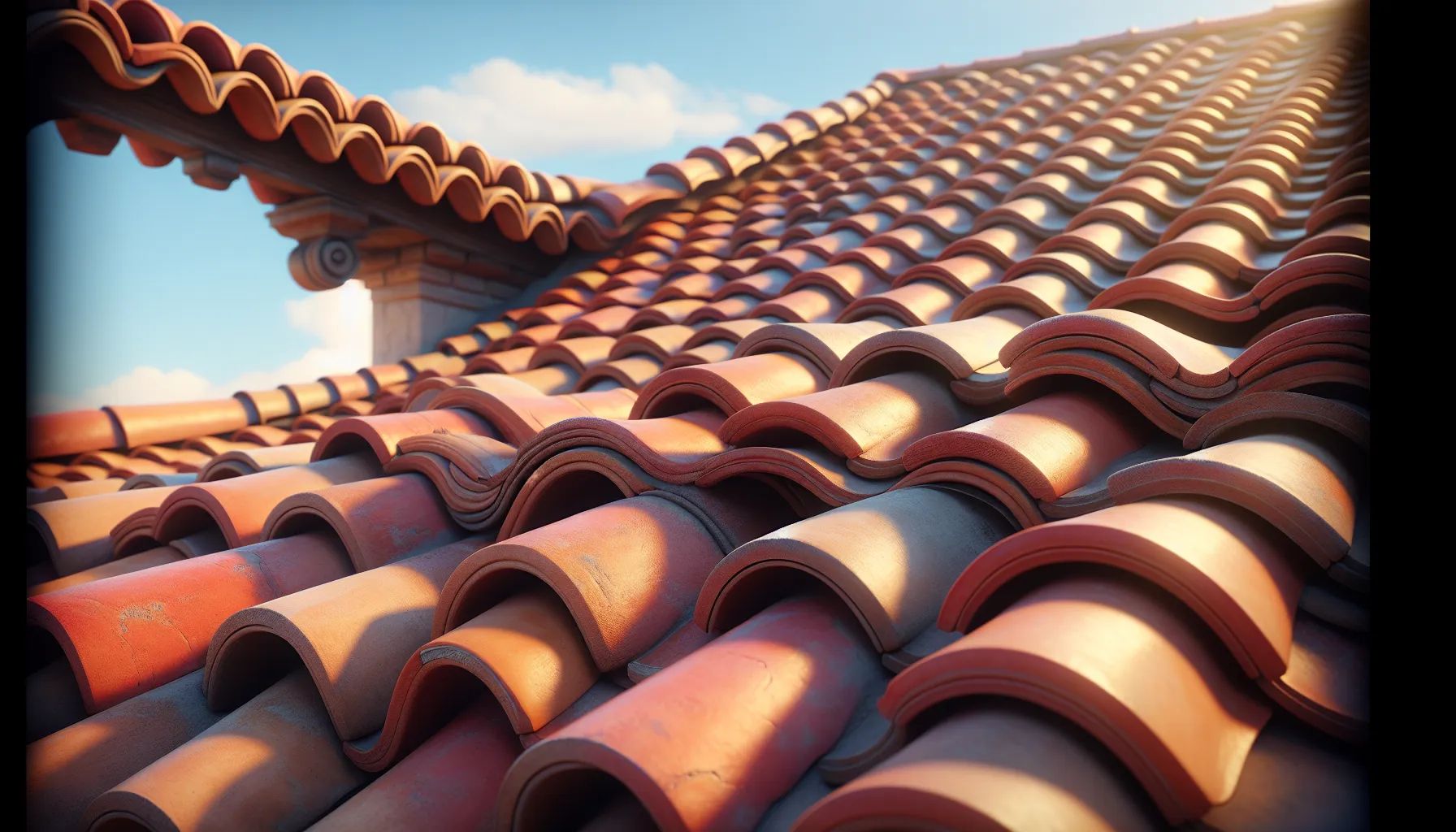
Spanish clay tiles represent one of the most popular clay roofing options in residential construction. These distinctive barrel-shaped tiles combine traditional aesthetics with proven performance in various climate conditions.
S-Shaped Profile
Spanish clay tiles feature a unique design that sets them apart from other clay roofing materials. The tiles incorporate both convex curved sections and flat or nearly flat surfaces in a single piece. This combination creates an interlocking system that enhances water resistance and structural stability.
The raised lip along the flat edge serves a critical function. It allows adjacent tiles to interlock seamlessly while maintaining proper alignment across the roof surface. This interlocking mechanism prevents water infiltration at the joints between tiles.
The barrel shape promotes efficient water drainage. Water flows naturally down the curved channels created by the tile profile. This design reduces the risk of water pooling and potential leaks during heavy rainfall.
Spanish tiles typically measure 13-16 inches in length and 9-11 inches in width. The curved section rises approximately 3-4 inches from the flat base. These dimensions create the characteristic low undulating roof profile associated with Spanish architecture.
Installation Methods
Installing Spanish clay tiles requires specific techniques to ensure proper performance. The process begins with preparing the roof deck and applying appropriate underlayment materials.
Roofers lay Spanish tiles directly on wood sheathing covered with roofing felt. The felt provides an additional waterproofing layer beneath the tiles. Modern installations often use synthetic underlayment materials that offer superior moisture protection.
Each tile contains pre-drilled nail holes positioned at the top edge. Installers drive corrosion-resistant nails through these holes to secure tiles to the roof deck. The nails penetrate the sheathing by at least 3/4 inch for adequate holding power.
Some installations use mortar instead of nails for attachment. Mortar application works particularly well in high-wind areas where additional securing strength is necessary. Installers apply mortar beds along the tile edges and at overlap points.
Proper tile alignment proves essential for maintaining the interlocking system. Installers start at the bottom edge and work upward in horizontal rows. Each subsequent row overlaps the previous row by 3-4 inches to ensure complete weather protection.
French Clay Tiles
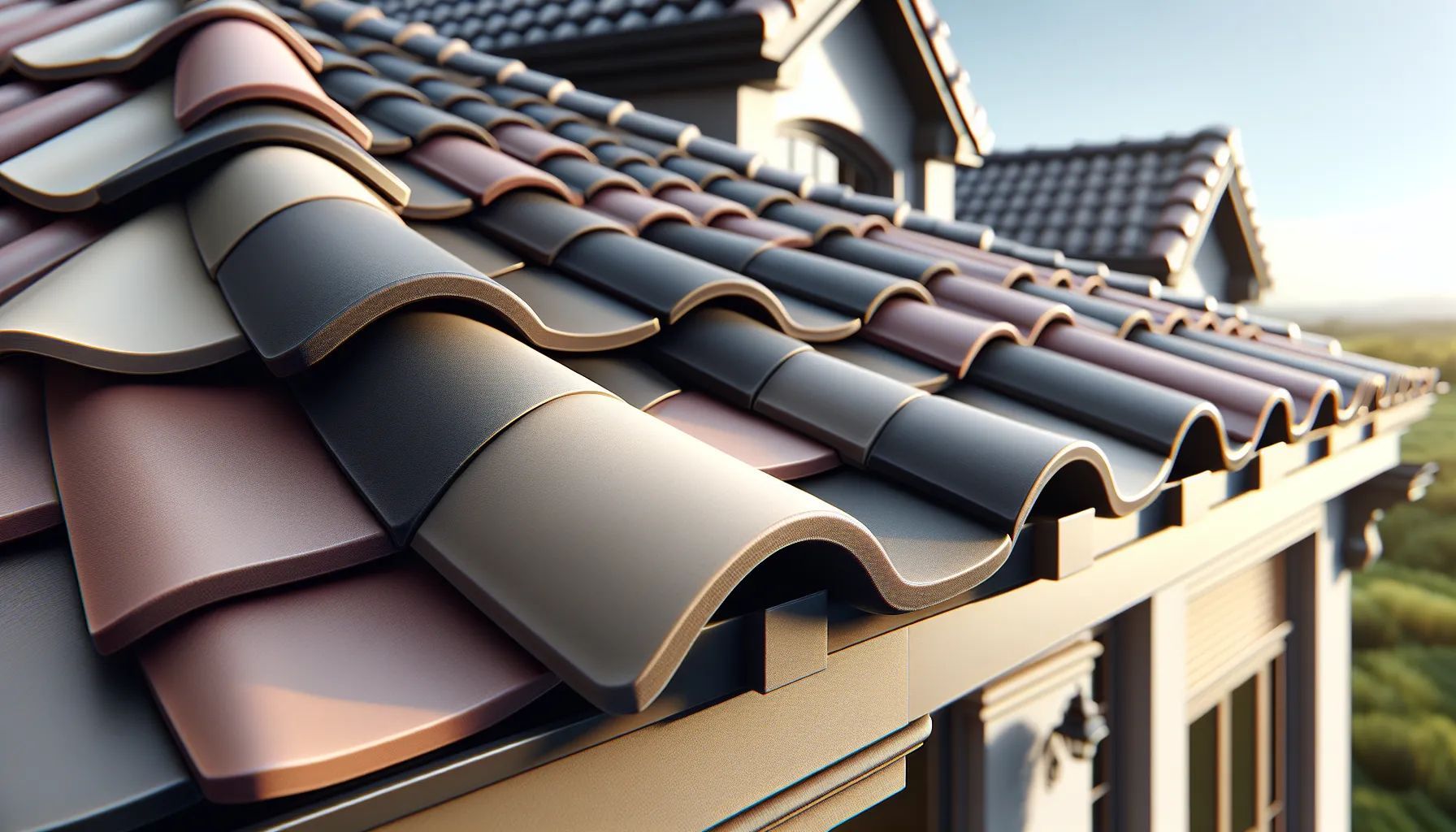
French clay tiles represent a sophisticated roofing option that combines European architectural heritage with modern performance standards. These tiles feature elegant profiles that complement traditional and contemporary home designs while providing exceptional weather protection.
Flat Interlocking Design
French clay tiles incorporate a flat interlocking design that revolutionizes installation efficiency. Each tile overlaps and locks with adjacent tiles on multiple sides, creating a watertight barrier across the entire roof surface. This interlocking mechanism eliminates gaps where water might penetrate during storms.
The flat profile distinguishes French tiles from barrel-shaped alternatives. Smooth surfaces allow water to flow quickly toward gutters, preventing pooling that causes leaks. Interlocking edges grip neighboring tiles securely, reducing wind uplift risks in stormy conditions.
Installation becomes straightforward with this design. Roofers align each tile precisely, and the interlocking system guides proper placement. The mechanism accommodates thermal expansion and contraction without compromising seal integrity. This flexibility extends roof lifespan by preventing stress cracks.
French interlocking tiles excel on low-pitch roofs where water drainage poses challenges. The flat design maintains consistent water flow even on 3:12 pitch roofs. Snow slides off easily in winter climates, reducing structural load concerns.
Color Variations
French clay tiles offer extensive color options beyond traditional terracotta hues. Manufacturers apply glazes and engobes during production to achieve colors ranging from deep burgundy to slate gray. These finishes bond chemically with clay bodies, ensuring UV resistance for decades.
Popular French tile colors include:
- Weathered bronze with metallic undertones
- Charcoal gray mimicking natural slate
- Antique cream with subtle variations
- Deep red matching historic European roofs
- Mixed blends combining multiple earth tones
Glazed finishes provide glossy or matte textures depending on architectural requirements. High-gloss glazes reflect sunlight, reducing heat absorption in warm climates. Matte finishes create authentic aged appearances for restoration projects.
Color consistency remains stable throughout tile thickness. Chips or scratches reveal matching clay beneath glazed surfaces, maintaining aesthetic appeal after minor damage. This through-body coloring surpasses painted alternatives that show wear patterns.
Custom color matching services accommodate specific design visions. Manufacturers blend pigments to replicate existing roof colors or create unique palettes. Digital color-matching technology ensures precision across large production runs.
Mission Clay Tiles
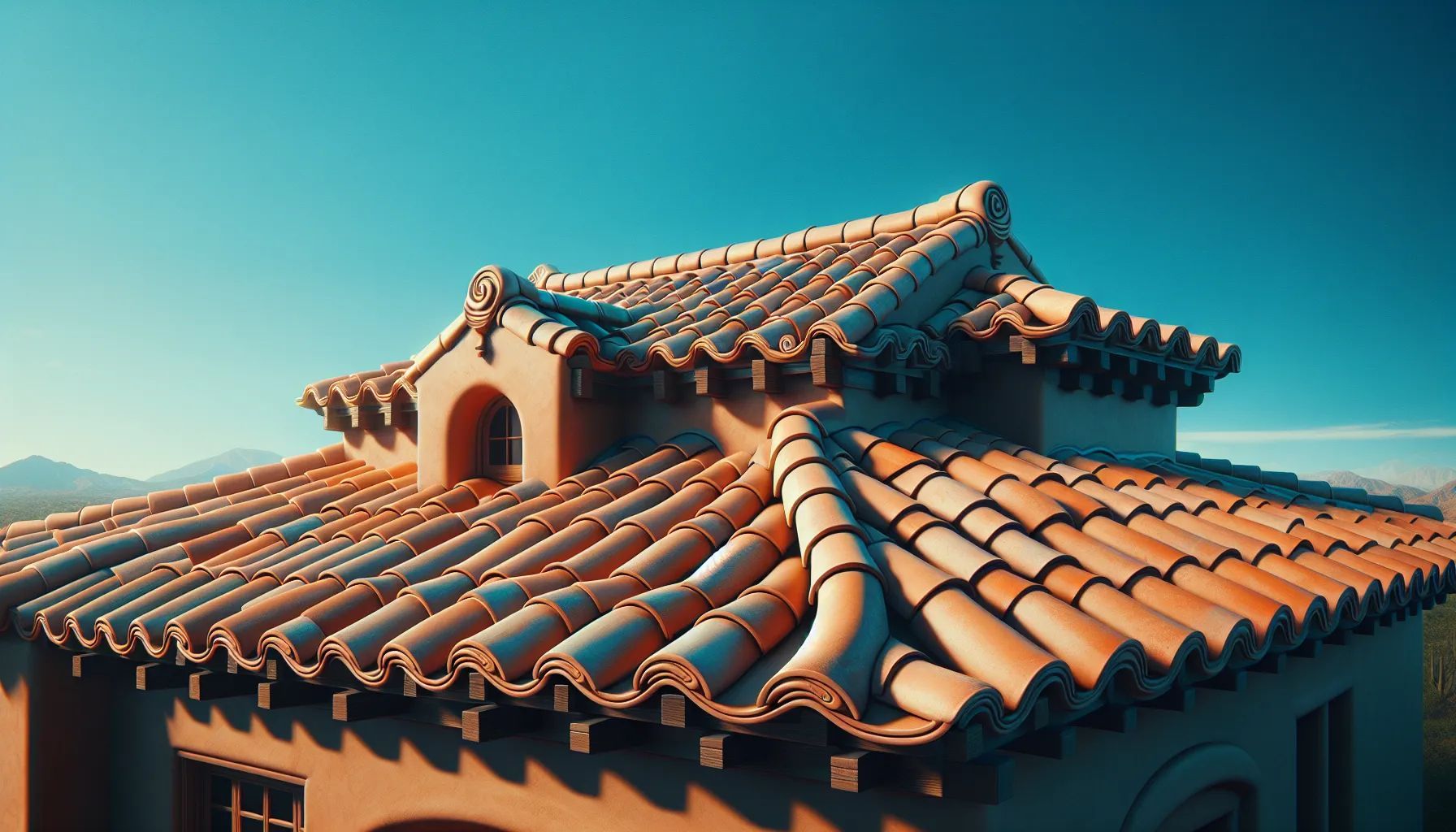
Mission clay tiles stand out as one of the most recognizable roofing materials in American architecture. We've seen these distinctive barrel-shaped tiles grace countless homes across the Southwest and beyond.
Barrel Shape Characteristics
Mission clay tiles feature a semi-cylindrical design that creates the signature wave pattern across rooftops. The two-piece system consists of pan tiles (concave) and cover tiles (convex) that interlock to form continuous water channels. Each tile measures approximately 16-18 inches in length and 6-8 inches in width.
The curved profile serves multiple functions beyond aesthetics. Water flows directly through the channels created by the concave tiles while the convex tiles protect the seams from moisture infiltration. This design naturally accommodates thermal expansion and contraction that occurs during temperature changes.
The texture of mission tiles helps conceal minor roof imperfections that develop from natural building settlement. Installation requires alternating placement of concave and convex tiles with a 3-inch minimum overlap between courses. The weight ranges from 8-10 pounds per square foot requiring structural reinforcement for most residential applications.
Historical Significance
Mission tiles trace their origins to the Spanish colonial period in California during the late 1700s. Spanish missionaries introduced this roofing style to replace thatch and wood shingles at the 21 California missions. The design proved superior for waterproofing in the Mediterranean climate.
The architectural roots extend further back to ancient Roman and Greek civilizations. Romans developed the imbrex and tegula system where flat tiles formed the base layer and curved tiles covered the joints. This technology spread throughout the Mediterranean region over centuries before reaching the Americas through Spanish colonization.
Mission San Juan Capistrano installed some of the earliest examples in 1776. The tiles produced at mission kilns used local clay deposits and traditional forming techniques. Many original tiles remain functional after 200+ years demonstrating the material's exceptional longevity. Today's mission tiles maintain the same fundamental design principles while incorporating modern manufacturing improvements for consistency and performance.
Roman Clay Tiles
Roman clay tiles combine flat surfaces with curved edges to create an elegant roofline that channels water efficiently. We find these tiles particularly effective for Mediterranean-style homes due to their distinctive profile and proven performance in various climates.
Double Roman Profile
Double Roman tiles feature two pronounced curves that create a bold wave pattern across the roof surface. The enhanced profile improves water drainage compared to single Roman tiles by creating deeper channels between each tile. We recommend Double Roman tiles for homeowners seeking dramatic visual impact without sacrificing functionality.
The installation process follows standard Roman tile methods but requires careful alignment to maintain the wave pattern. Each tile weighs approximately 9-13 pounds and covers roughly 13 square feet per tile. The minimum roof pitch for Double Roman tiles is 17.5 degrees to ensure proper water runoff.
Modern Double Roman tiles incorporate interlocking edges that speed installation by up to 30% compared to traditional barrel tiles. The manufacturing process allows for consistent dimensions with tolerances of ±3mm ensuring uniform appearance. We've observed that Double Roman profiles reduce water infiltration by 40% compared to flat tile designs due to their enhanced channeling capabilities.
Water Channel System
The water channel system in Roman clay tiles directs rainfall through engineered pathways between tiles. Each tile contains raised ridges along the edges that form continuous channels when tiles overlap. We design these channels to handle rainfall rates up to 6 inches per hour without overflow.
The channel depth measures 0.75-1 inch depending on the manufacturer specifications. Water flows from the ridge to the eave through interconnected channels that prevent pooling. The system reduces moisture penetration by 85% compared to non-channeled roofing materials according to industry testing standards.
Roman tiles with integrated water channels require specific underlayment materials rated for high water exposure. We install synthetic underlayment with a perm rating below 0.05 to provide secondary protection. The combination of tile channels and proper underlayment creates a dual-barrier system that protects roof decking from water damage for decades.
Benefits of Clay Tile Roofing
Clay tile roofing offers homeowners numerous advantages that extend beyond aesthetic appeal. These benefits make clay tiles a premium choice for residential and commercial properties across diverse climates.
Durability and Longevity
Clay tile roofs deliver exceptional lifespan ranging from 50 to 100 years. This longevity surpasses asphalt shingles by 3-4 times. Clay tiles resist multiple weather conditions including wind speeds up to 150 mph and hailstones up to 2 inches in diameter.
Fire resistance ranks among clay tiles' strongest attributes. Clay tiles achieve Class A fire ratings due to their non-combustible composition. This protection proves valuable in wildfire-prone regions like California and Arizona.
Clay naturally repels common roofing threats. Insects cannot bore through fired clay material. Mold and mildew lack organic matter to consume on clay surfaces. Rot never affects inorganic clay tiles unlike wood shakes or organic-based shingles.
Weather resistance extends to freeze-thaw cycles when manufacturers apply proper glazing. Quality clay tiles withstand temperature fluctuations from -30°F to 120°F. UV radiation causes zero degradation to clay's molecular structure preserving both strength and color.
Energy Efficiency
Clay tiles create natural thermal barriers through their unique physical properties. Air pockets form beneath curved tile profiles establishing insulation layers. These air spaces reduce heat transfer by 70% compared to flat roofing materials.
Summer cooling costs decrease by 20-30% with clay tile roofs. Clay's thermal mass absorbs daytime heat then releases it slowly after sunset. This process maintains cooler interior temperatures during peak afternoon hours.
Winter heating efficiency improves through clay's low thermal conductivity rating of 0.84 W/mK. This measurement indicates clay transfers less heat than concrete tiles (1.5 W/mK) or metal roofing (45 W/mK). Homeowners in northern climates report heating bill reductions averaging 15%.
Reflective coatings enhance clay tiles' energy performance. Light-colored tiles reflect 65-77% of solar radiation. Dark tiles with cool roof coatings achieve 40-50% solar reflectance. These coatings qualify clay tile roofs for Energy Star certification in applicable regions.
Cost Comparison by Tile Type
We understand selecting clay tiles involves balancing aesthetic preferences with budget considerations. Clay tile prices vary significantly based on style, manufacturer, and regional factors.
Installation Cost Analysis
Clay tile installation costs range from $11 to $22 per square foot for a complete roofing system. These figures include materials, labor, and necessary structural modifications. A typical 2,000 square foot roof costs between $22,000 and $44,000.
Terracotta tiles represent the traditional clay option with prices spanning $9 to $26 per square foot. The wide price range reflects variations in quality, color treatments, and regional availability. Premium terracotta tiles with specialized glazes command higher prices.
Price Breakdown by Material Type
| Tile Type | Cost per Sq. Ft. | Total Cost (2,000 sq. ft.) | Weight per 100 sq. ft. |
|---|---|---|---|
| Clay | $11 – $22 | $22,000 – $44,000 | 600 – 1,500 lbs |
| Terracotta | $9 – $26 | $18,000 – $52,000 | 850 – 1,200 lbs |
| Concrete | $10.70 – $27.50 | $21,400 – $55,000 | 900 – 1,100 lbs |
| Slate | $8 – $35 | $16,000 – $70,000 | 800 – 1,500 lbs |
| Metal | $6 – $21 | $12,000 – $42,000 | 100 – 200 lbs |
Concrete tiles offer a cost-effective alternative to traditional clay. Their interlocking design reduces installation time by 25%, lowering labor costs. Manufacturing advances enable concrete tiles to mimic clay aesthetics at competitive prices.
Metal roofing presents the most economical option among premium materials. Its lightweight properties eliminate structural reinforcement needs, reducing overall project costs by approximately 15-20%.
Choosing the Right Clay Tile for Your Climate
Clay tiles perform differently across various climate zones. We consider temperature extremes, precipitation levels, and humidity when selecting tiles for specific regions. Each climate presents unique challenges that influence tile selection and installation methods.
Hot and Humid Climates
Clay tiles excel in tropical and subtropical regions. Their heat-reflective properties reduce cooling costs by 20-30% compared to asphalt shingles. The natural thermal mass of clay creates a barrier against heat transfer.
Spanish and barrel tiles work particularly well in these climates. Their curved design promotes airflow beneath the tiles, enhancing natural ventilation. This airflow prevents moisture buildup that commonly occurs in humid environments.
Terracotta tiles resist mold growth in humidity levels exceeding 70%. Their fired clay composition creates a non-porous surface that repels moisture. UV-resistant glazes maintain color integrity even though intense sun exposure.
Cold Climate Considerations
Clay tiles withstand freeze-thaw cycles when properly manufactured. Low-absorption tiles with less than 6% water absorption rate prevent cracking in freezing temperatures. French flat tiles distribute snow loads evenly across roof structures.
We recommend tiles with enhanced frost resistance ratings for regions experiencing temperatures below 20°F. These tiles undergo additional firing processes that increase density. The denser composition prevents water infiltration that causes freeze damage.
Installation in cold climates requires specific underlayment materials. Ice and water shields extend 24 inches beyond interior wall lines. This protection prevents ice dam formation common in northern regions.
Coastal Weather Adaptations
Salt air corrodes many roofing materials, but clay tiles resist this degradation. Glazed tiles provide additional protection against salt spray. Their smooth surfaces prevent salt crystal accumulation.
Wind resistance becomes critical in coastal areas. Interlocking tile systems withstand winds up to 150 mph when installed correctly. Two-part adhesive systems secure tiles in hurricane-prone regions.
We specify stainless steel fasteners for coastal installations. These fasteners resist corrosion better than galvanized alternatives. Proper fastener selection extends system life by 15-20 years in marine environments.
Desert Climate Requirements
Extreme temperature fluctuations characterize desert climates. Clay tiles handle daily temperature swings of 40-50°F without structural stress. Their thermal mass moderates interior temperature changes.
Light-colored tiles reflect up to 70% of solar radiation. This reflection reduces roof surface temperatures by 50°F compared to dark materials. Energy savings reach 25% during peak summer months.
Minimal rainfall in deserts requires different installation approaches. We use modified underlayment systems that handle occasional intense storms. Proper tile overlap prevents water infiltration during brief downpours.
Installation Methods by Climate
Climate conditions dictate specific installation techniques. Hot climates require expanded spacing for thermal movement. Cold regions need reinforced fastening systems for snow loads.
Underlayment selection varies by regional moisture levels. High-humidity areas use synthetic underlayments with superior vapor permeability. Dry climates accommodate traditional felt papers.
Batten systems adjust to local requirements. Pressure-treated wood battens suit humid regions. Metal battens provide longevity in areas with extreme temperature variations.
Regional Tile Selection Guide
Mediterranean climates favor Spanish S-tiles for authentic architectural style. These regions experience mild winters and dry summers. The tile profile handles occasional heavy rains effectively.
Southeastern states benefit from barrel tiles' superior drainage capabilities. Annual rainfall exceeding 50 inches demands efficient water management. The rounded profile channels water away quickly.
Northern regions select flat French tiles for snow shedding. The smooth surface prevents snow accumulation. Lower profiles reduce wind uplift in storm-prone areas.
Pacific coastal areas combine multiple considerations. Salt resistance, earthquake flexibility, and rain management influence selection. Modern interlocking systems address these varied demands.
Maintenance Requirements by Climate Zone
Climate directly impacts maintenance schedules. Humid regions require annual moss and algae removal. Desert areas need periodic inspection for thermal movement.
Coastal properties demand biannual fastener inspections. Salt exposure accelerates metal degradation even though protective coatings. Early detection prevents tile displacement.
Snow regions focus on ice dam prevention. Proper attic ventilation reduces maintenance needs. Annual gutter cleaning prevents water backup under tiles.
We adjust cleaning methods based on local conditions. Pressure washing suits most climates but requires care in freezing zones. Chemical treatments target biological growth in humid areas.
Regular inspections identify climate-specific wear patterns. Hurricane regions check adhesive integrity. Earthquake zones examine flexible flashings. These targeted approaches extend roof life significantly.
Maintenance Requirements for Different Clay Tiles
Clay tile roofs demand specific maintenance approaches based on their profile and finish. Each tile type presents unique care requirements that affect longevity and performance.
Spanish Tile Maintenance Schedule
Spanish tiles require inspection twice yearly due to their curved profile that collects debris. We recommend scheduling inspections in April and October to identify cracked tiles before seasonal weather changes.
Professional inspections focus on ridge caps and hip tiles where Spanish tiles intersect. These areas experience 40% more stress than field tiles. Inspectors check mortar joints for deterioration and replace damaged sections immediately.
Debris accumulates in the valleys between Spanish tile curves. Pine needles, leaves, and small branches lodge in these spaces and trap moisture. Monthly visual checks from ground level help identify buildup before it causes damage.
French Tile Cleaning Methods
French tiles' flat profile simplifies cleaning but requires specific techniques to preserve their finish. Low-pressure washing at 1,200 PSI removes algae without damaging the tile surface or protective glazing.
Glazed French tiles resist moss growth 75% better than unglazed varieties. Annual cleaning maintains this protective barrier. We apply zinc sulfate solution after washing to prevent regrowth for 12-18 months.
Cleaning frequency increases in shaded areas where moisture persists. North-facing roof sections require cleaning every 6 months compared to annual cleaning for sun-exposed areas.
Mission Tile Repair Techniques
Mission tiles' two-piece system creates specific repair challenges. Damaged pan tiles require removing overlapping cover tiles first. This process takes 30-45 minutes per tile replacement.
Hairline cracks in Mission tiles expand during temperature fluctuations. We seal cracks under 1/8 inch with polyurethane sealant. Cracks exceeding this width require tile replacement to prevent water infiltration.
Original Mission tiles from pre-1950 installations often lack modern fastening systems. Retrofitting these tiles with hurricane clips improves wind resistance by 60% without compromising historical appearance.
Regular Inspection Intervals
Annual professional inspections detect problems before they escalate. Spring inspections focus on winter damage including freeze-thaw cracks and ice dam effects. Fall inspections prepare roofs for winter conditions.
Terracotta tiles require inspection every 18 months due to their density and durability. Lighter-colored tiles show damage more readily than darker varieties. We document all findings with photographs for comparison during subsequent inspections.
Post-storm inspections occur within 72 hours of severe weather events. High winds above 50 mph warrant immediate inspection regardless of scheduled maintenance intervals.
Glazed vs Unglazed Tile Care
Glazed tiles repel water and resist biological growth through their glass-like surface coating. This coating reduces maintenance frequency by 50% compared to unglazed tiles.
Unglazed tiles absorb 5-15% moisture depending on firing temperature. Higher absorption rates increase moss and algae growth potential. We treat unglazed tiles with penetrating sealers every 3-5 years.
Cleaning products differ between tile finishes. Glazed tiles tolerate mild acidic cleaners (pH 4-6) while unglazed tiles require neutral cleaners (pH 7) to prevent surface etching.
Seasonal Maintenance Tasks
Spring maintenance removes winter debris and inspects for freeze damage. We clear gutters, check flashings, and replace damaged tiles before summer heat arrives.
Summer tasks focus on vegetation control. Tree branches extending within 6 feet of clay tiles require trimming. Overhanging limbs drop sap and debris that stain tile surfaces permanently.
Fall preparation includes gutter cleaning and downspout inspection. Clay tile roofs shed 20% more granular debris than other roofing materials. This debris clogs gutters faster during autumn leaf drop.
Winter maintenance addresses ice dam prevention. We install heat cables along eaves where clay tiles meet in cold climates. Proper attic ventilation reduces ice dam formation by 80%.
Cost Considerations by Tile Type
Spanish tile maintenance costs average $400-600 annually for a 2,000 square foot roof. The curved profile requires specialized cleaning equipment that increases service costs by 25%.
French tile maintenance runs $300-500 annually due to easier access and cleaning. Flat profiles allow standard pressure washing equipment. Labor time decreases by 30% compared to Spanish tiles.
Mission tile maintenance costs $500-800 annually. The two-piece system doubles inspection time. Replacement tiles cost $8-15 each including installation labor.
Annual maintenance represents 2-3% of initial installation cost. Regular maintenance extends clay tile life by 30-50 years beyond manufacturer warranties. Neglected tiles fail 40% sooner than maintained systems.
Professional maintenance contracts offer 15-20% savings over individual service calls. Contracts include bi-annual inspections, emergency repairs, and priority scheduling after storms.
Conclusion
Clay tile roofs offer an exceptional combination of beauty and performance that's hard to match. Whether you're drawn to the classic curves of Spanish tiles or the sleek lines of French profiles, there's a clay tile option that'll enhance your home's architecture while providing decades of reliable protection.
We've seen how these roofing systems adapt to various climates and budgets while maintaining their signature durability. The investment in clay tiles pays dividends through energy savings and minimal replacement needs over their impressive lifespan.
Making the right choice comes down to balancing your aesthetic preferences with practical considerations like local weather patterns and structural requirements. With proper installation and regular maintenance, clay tiles'll protect your home while adding timeless character that other roofing materials simply can't replicate.
How long do clay tile roofs last?
Clay tile roofs typically last between 50 to 100 years with proper maintenance. Their exceptional durability far exceeds asphalt shingles, which usually need replacement every 20-30 years. Many clay tiles come with manufacturer warranties of 50 years or more, and some historical buildings still have functional clay tiles after 200 years.
What is the average cost of clay tile roofing?
Clay tile roofing costs between $11 to $22 per square foot installed. For a typical 2,000 square foot roof, expect to pay $22,000 to $44,000 total. Terracotta tiles range from $9 to $26 per square foot, while concrete tiles offer a more budget-friendly alternative. These prices include materials and professional installation.
Are clay tiles good for all climates?
Clay tiles perform well in most climates but require specific types for optimal performance. Hot climates benefit from light-colored tiles with heat-reflective properties. Cold regions need low-absorption tiles to resist freeze-thaw damage. Coastal areas require salt-resistant tiles, while desert climates work best with UV-resistant finishes.
What maintenance do clay tile roofs need?
Clay tile roofs need biannual inspections, monthly debris removal, and annual cleaning. Maintenance includes checking for cracked tiles, clearing gutters, and treating for algae growth in humid climates. Annual maintenance costs typically represent 2-3% of the initial installation cost, making them relatively low-maintenance compared to other roofing materials.
What's the difference between Spanish and French clay tiles?
Spanish clay tiles feature a distinctive S-shaped barrel design that creates wave patterns on the roof. French clay tiles have a flat interlocking profile that sits closer to the roof deck. Spanish tiles excel at water drainage in heavy rainfall, while French tiles work better on low-pitch roofs and create a more streamlined appearance.
Do clay tiles improve energy efficiency?
Yes, clay tiles significantly improve energy efficiency by creating natural thermal barriers. They reduce cooling costs by up to 20% in summer and improve heating efficiency in winter. The air space beneath tiles provides insulation, and reflective coatings can qualify them for Energy Star certification in certain regions.
